(V)
two
LEARNING INTERNAL REPRESENTATIONS
BERROR PROPAGATION
David E. Ruineihart, Geoffrey E. Hint..,
and Ronald J. Williams
0
4
September 1985
ICS Report 8506
COGNITIVE
SCIENCE
IaQ I
INSTITUTE FOR COGNITIVE SCIENCE
UNIVERSITY OF CALIFORNIA, SAN DIEGO
862 18
LA JOLLA, CALIFORNIA 92093
120,
�
4-
U-
�
LEARNING INTERNAL REPRESENTATIONS
BY ERROR PROPAGATION
David E. Rumelhart, Geoffrey E. Hinton,
and Ronald J. Williams
DTIC
September 1985
ICS Report M50 SLD
AL"LECT
FEB 20 M
David E. Rumelhart
Institute for Cognitive Science
University of California, San Diego
Geoffrey E. Hinton
Department of Computer Science
Carnegie-Mellon University
Ronald J. Williams
Institute for Cognitive Science
University of California, San Diego
Di'
_
AL
xow"d io n publ@
DkltAtfikuim
fi1Id
To be published in D. E. Rumelhart & i. L. McClelland (Eds.), Parallel Distributed
Processing: Explorations in the Microstructure of Cognition. Vol. 1: Foundations.
Cambridge, MA: Bradford Books/MIT Press.
This research wa supported by Contract NOD14.45-K0450, NR 667-58 with the Personnel Lad Training Research Pro-
gams of the Office of Naval Research and by grants from the System Development Foundation. Requests for rm-
prints siould be seat to David E. Ramdhut, Institute for Cognitive Science, C4)13; University of California, San
Diego; La Jolla, CA 92093.
Copyright 0 1985 by David B. Rumeliat, Geoffrey E. finton. and Ronald i. Williams
U P.
�
Unclassified
SECURITY CLASSIFICATION OF THIS PAGE
REPORT DOCUMENTATION PAGE
la. REPORT SECURITY CLASSIFICATION
Unclassified
2a. SECURITY CLASSIFICATION AUTHORITY
2b. DECLASSIFICATION I DOWNGRADING SCHEDULE
lb RESTRICTIVE MARKINGS
3. DISTRIBUTION/AVAILABILITY OF REPORT
Approved for public release;
distribution unlimited.
,,
4. PERFORMING ORGANIZATION REPORT NUMBER(S)
S. MONITORING ORGANIZATION REPORT NUMBER(S)
ICS 8506
6a. NAME OF PERFORMING ORGANIZATION
Institute for Cognitive
Science
I
6b. OFFICE SYMBOL
(If applicable)
6c. ADDRESS (City, State, and ZIP Code)
C-015
University of California, San Diego
La Jolla, CA 92093
Ba. NAME OF FUNDING/SPONSORING
ORGANIZATION
Personnel & Training Researc
8b. OFFICE SYMBOL
(If applicable)
8c. ADDRESS (City, State, and ZIP Code)
Code 1142 PT
Office of Naval Research
800 N. Quincy St., Arlington, VA 22217-5000
11. TITLE (Include Security Classification)
7a NAME OF MONITORING ORGANIZATION
7b. ADDRESS (City, State, and ZIP Code)
9. PROCUREMENT
INSTRUMENT
IDENTIFICATION NUMBER
N00014-85-K-0450
10. SOURCE OF FUNDING NUMBERS
PROGRAM
ELEMENT NO.
PROJECT
NO.
NR 667-548
TASK
NO.
WORK UNiT
ACCESSION NO
Learning Internal Representations by Error Propagation
12. PERSONAL AUTHOR(S)
David E. Rumelhart, Geoffrey E. Hinton, and Ronald J. Williams
13a. TYPE OF REPORT
Technical
13b. TIME COVERED
FROMMar 85
TO Sept 8
14. DATE OF REPORT (ear, Month, Day) S. PAGE COUNT
September 1985
34
16 SUPPLEMFNTARY NOTATION
To be published in J. L. McClelland, D. E. Rumelhart, & the PDP Research Group,
Parallel Dislribuled Processing: Exploratiois in the Microstrucure of Cognkion: Vol 1. Founsdations. Cambridge, MA:
Bradford nlooks/Mnr Press.
17.
COSATI CODES
FIELD
GROUP
SUB-GROUP
18. SUBJECT TERMS (Continue on reverse if necessary and identify by block number)
-learning; networks; perceptrons; adaptive systems;
learning machines; back propagation
19. ABSTRACT (Continue on reverse if necessary and identify by block number)
This paper presents a generalization of the perceptron learning procedure for learning the correct
sets of connections for arbitrary networks. The rule, called the generalized delta rule, is a simple
scheme for implementing a gradient descent method for finding weights that minimize the sum squared
error of the system's performance. The major theoretical contribution of the work is the procedure
called error propagation, whereby the gradient can be determined by individual units of the network
based only on locally available information. The major empirical contribution of the work is to show
that thc problem of local minima is not serious in this application of gradient descent. i
20. DISTRIBUTION/AVAILABILITY OF ABSTRACT
QUNCLASSIFIED/UNLIMITED
0 SAME AS RPT.
21. ABSTRACT SECURITY CLASSIFICATION
0 DTIC USERS
Unclassified
22a NAME OF RESPONSIBLE INDIVIDUAL
22b. TELEPHONE (Include Area Code) 22c. OFFICE SYMBOL
DO FORM 1473, 84 MAR
83 APR edition may be used until exhausted.
All other editions are obsolete.
SECURITY CLASSIFICATION OF THIS PAGE
Unclassified
�
Contents
THE PROBLEM .................................................................................
THE GEN4ERALIZED DELTA RULE........................................................
The delta rule and gradient descent................................................
The delta rule for semilinear activation functions in feedforward networks.
S[MULATION RESULTS .....................................................................
A useful activation function ..........................................................
The learning rate.....................................................................
Symmetry breaking...................................................................
The XOR Problem........................................................................
Parity ...................................................................................
The Encoding Problem...................................................................
Symmetry ...............................................................................
Addition ................................................................................
Negation Problem....................................................................
*The
The T-C Problem ..........................................................................
More Simulation Results.................................................................
SOME FURTHER GENERALIZATIONS ...................................................
The Generalized Delta Rule and Sigma-Pi Units ....................................
Recurrent Nets.........................................................................
Leff nng to be a shift register ......................................................
Learning to complete sequences .....................................................
CONCLUSION...................................................................................
REFERENCES................................................................................
4
4
5
8
8
9
10
10
12
14
17
18
21
22
26
26
26
2
29
30
31
33
Uiannoun'ced
13
�
Learning Internal Representations
by Error Propagation
DAVID E. RUMELHART, GEOFFREY E. HINTON, and RONALD J. WILLIAMS
THE PROBLEM
We now have a rather good understanding of simple two-layer associative networks in which
a set of input patterns arriving at an input layer are mapped directly to a set of output patterns
at an output layer. Such networks have no hidden units. They involve only input and owput
units. In these cases there is no internal represenatmon. The coding provided by the external
world must suffice. These networks have proved useful in a wide variety of applications (cf.
Chapters 2, 17, and 18). Perhaps the essential character of such networks is that they map simi-
lar input patterns to similar output patterns. This is what allows these networks to make rea-
sonable generalizations and perform reasonably on patterns that have never before been
presented. The similarity of patterns in a PDP system is determined by their overlap. The
overlap in such networks is determined outside the learning system itself-by whatever pro-
duces the patterns.
The constraint that similar input patterns lead to similar outputs can lead to an inability of
the system to learn certain mappings from input to output. Whenever the representation pro-
vided by the outside world is such that the similarity structure of the input and output pat-
tcrns are very different, a network without internal representations (i.e., a network without
hidden units) will be unable to perform the necessary mappings. A classic example of this case
is the exclusive-or (XOR) problem illustrated in Table 1. Here we see that those patterns
which overlap least arc supposed to generate identical output values. This problem and many
others like it cannot be performed by networks without hidden units with which to create
TABLE I
Input Patterns
Output oPatterns
01
-0
�
2
RUMELHART. HrwrON. and WILLIAMS
TABLE 2
Input Patterns
Output Patterns
00
010
11
-
0
1.
0
their own internal representations of the input patterns. It is interesting to note that had the
input patterns contained a third input taking the value 1 whenever the first two have value 1 as
shown in Table 2, a two-layer system would be able to solve the problem.
Minsky and Papert (1969) have provided a very careful analysis of conditions under which
such systems are capable of carrying out the required mappings. They show that in a large
number of interesting cases, networks of this kind are incapable of solving the problems. On
the other hand, as Minsky and Papert also pointed out, if there is a layer of simple perceptron-
like hidden units, as shown in Figure 1, with which the original input pattern can be aug-
mented, there is always a recoding (i.e., an internal representation) of the input patterns in the
hidden units in which the similarity of the patterns among the hidden units can support any
required mapping from the input to the output units. Thus, if we have the right connections
from the input units to a large enough set of hidden units, we can always find a representation
Output Patterns
Internal
O" *Representation
Units
Input Patterns
FIGURE 1. A multilayer network. In this case the information coming to the input units is receded into an inter-
nal representation and the outputs are generated by the internal representation rather than by the original pattern.
Input patterns can always be encoded, if there are enough hidden units, in a form so that the appropriate output pat-
tern can be generated from any input pattern.
6
M
�
LEARNING miNLRNAL REPRE ENTATIONS
3
that will perform any mapping from input to output through these hidden units. In the case
of the XOR problem, the addition of a feature that detects the conjunction of the input units
changes the similarity structure of the patterns sufficiently to allow the solution to be learned.
As illustrated in Figure 2, this can be done with a single hidden unit. The numbers on the
arrows represent the strengths of the connections among the units. The numbers written in
the circles represent the thresholds of the units. The value of +1.5 for the threshold of the
hidden unit insures that it will be turned on only when both input units are on. The value 0.5
for the output unit insures that it will turn on only when it receives a net positive input
greater than 0.5. The weight of -2 from the hidden uait to the output unit insures that the
output unit will not come on when both input units arc on. Note that from the point of view
of the output unit, the hidden unit is treated as simply another input unit. It is as if the input
patterns consisted of three rather than two units.
The existence of networks such as this illustrates the potential power of hidden units and
internal representations. The problem, as noted by Minsky and Papert, is that whereas there is
a very simple guaranteed learning rule for all problems that can be solved without hidden units,
namely, the perceptron convergence procedure (or the variation due originally to Widrow and
Hoff, 1960, which we call the delta rule; see Chapter 11), there is no equally powerful rule for
learning in networks with hidden units. There have been three basic responses to this lack.
One response is represented by competitive learning (Chapter 5) in which simple unsupervised
learning rules are employed so that useful hidden units develop. Although these approaches are
promising, there is no external force to insure that hidden units appropriate for the required
mapping are developed. The second response is to simply asswne an internal representation
that, on some a priori grounds, seems reasonable. This is the tack taken in the chapter on verb
learning (Chapter 18) and in theinteractive activation model of word perception (McClelland
& Rumelhart, 1981; Rumelhart & McClelland, 1982). The third approach is to attempt to
develop a learning procedure capable of learning an internal representation adequate for per-
forming the task at hand. One such development is presented in the discussion of Boltzmann
machines in Chapter 7. As we have seen, this procedure involves the use of stochastic units,
requires the network to reach equilibrium in two different phases, and is limited to symmetric
networks. Another recent approach, also employing stochastic units, has been developed by
Barto (1985) and various of his colleagues (cf. Barto & Anandan, 1985).
In this chapter we
.5 Output Unit
+1
-21
+1
Hidden Unit
S +1
+1
Input Units
FIGURE 2. A simple XOR network with one hidden unit. See text for explanation.
d
'% ..
- P I .
�
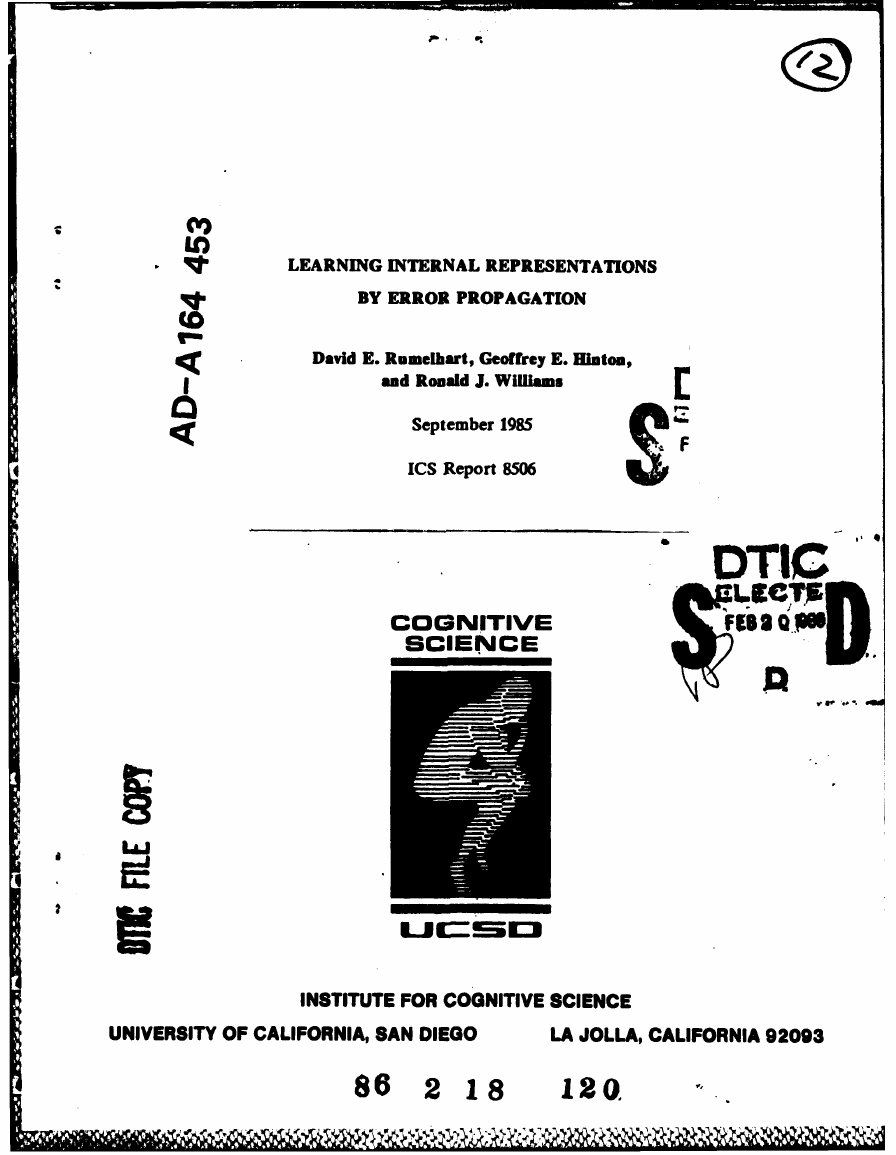
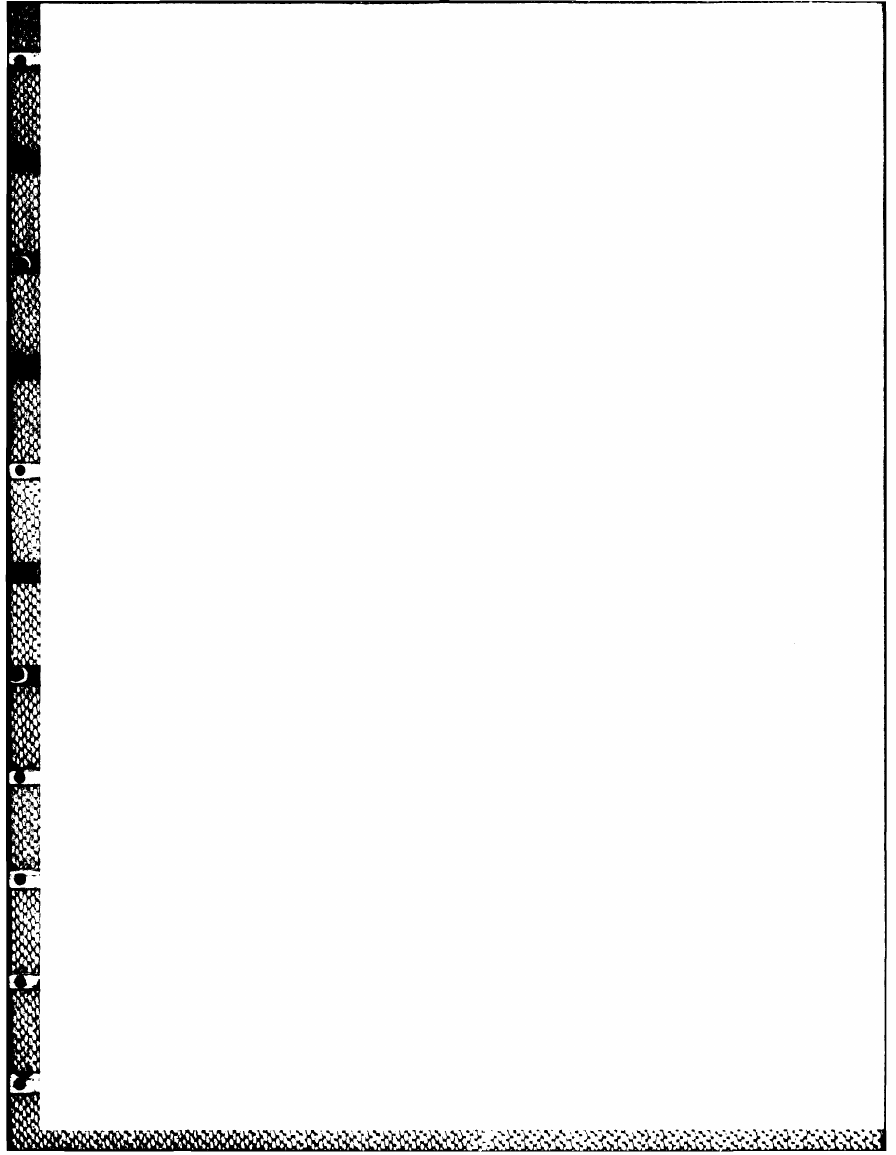
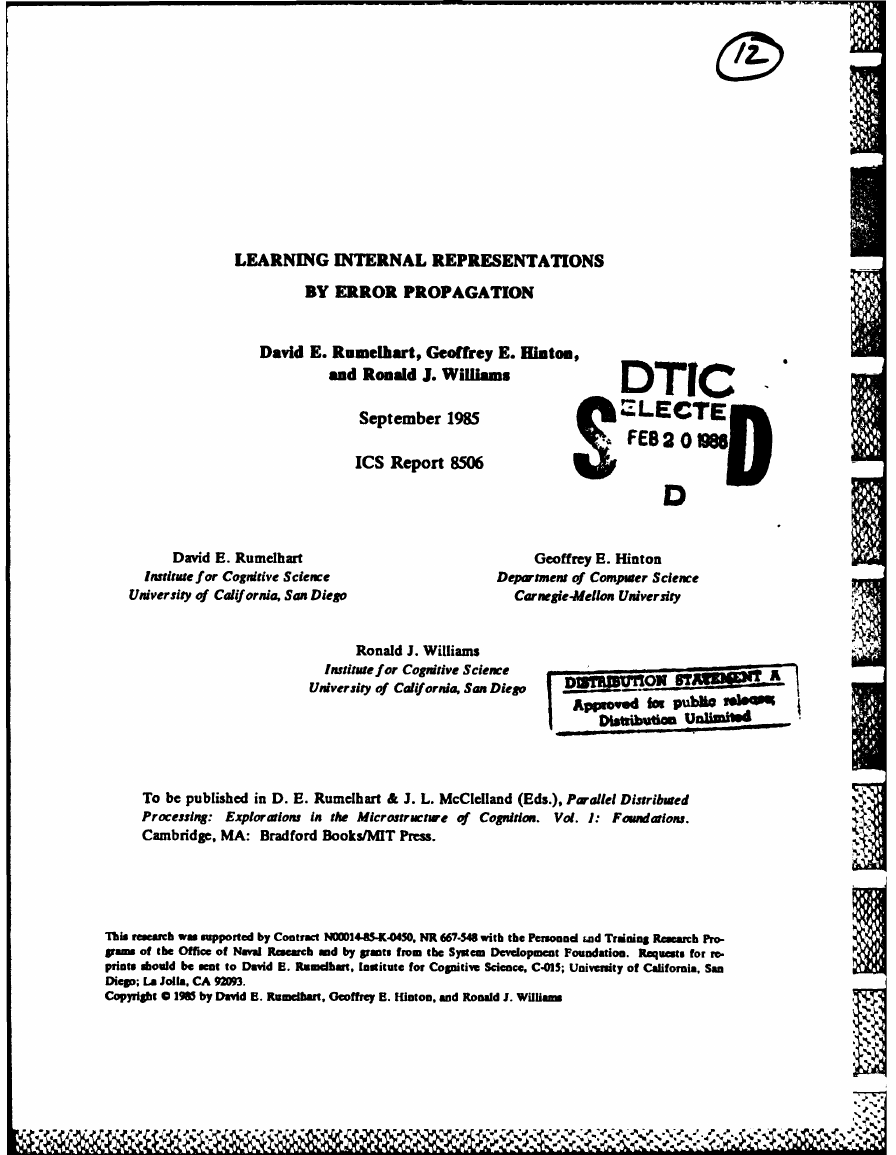
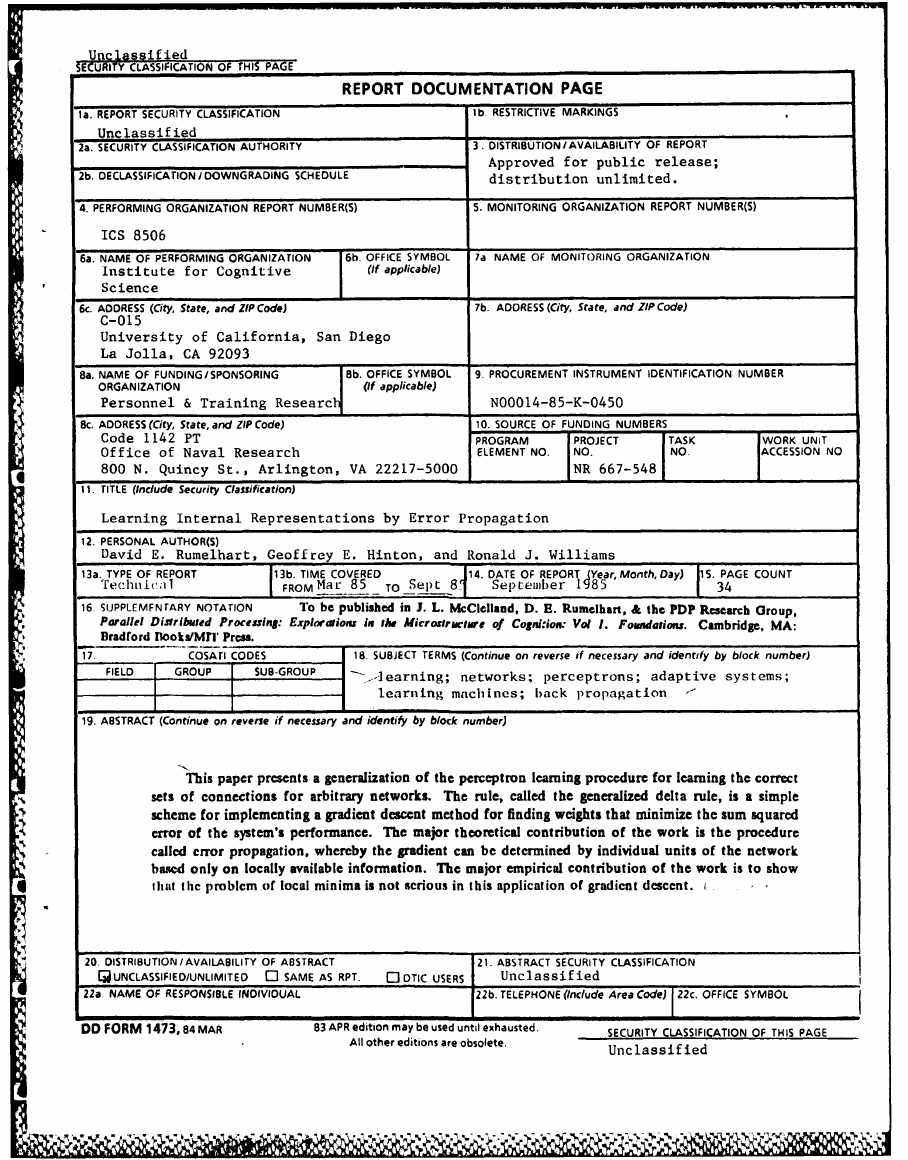
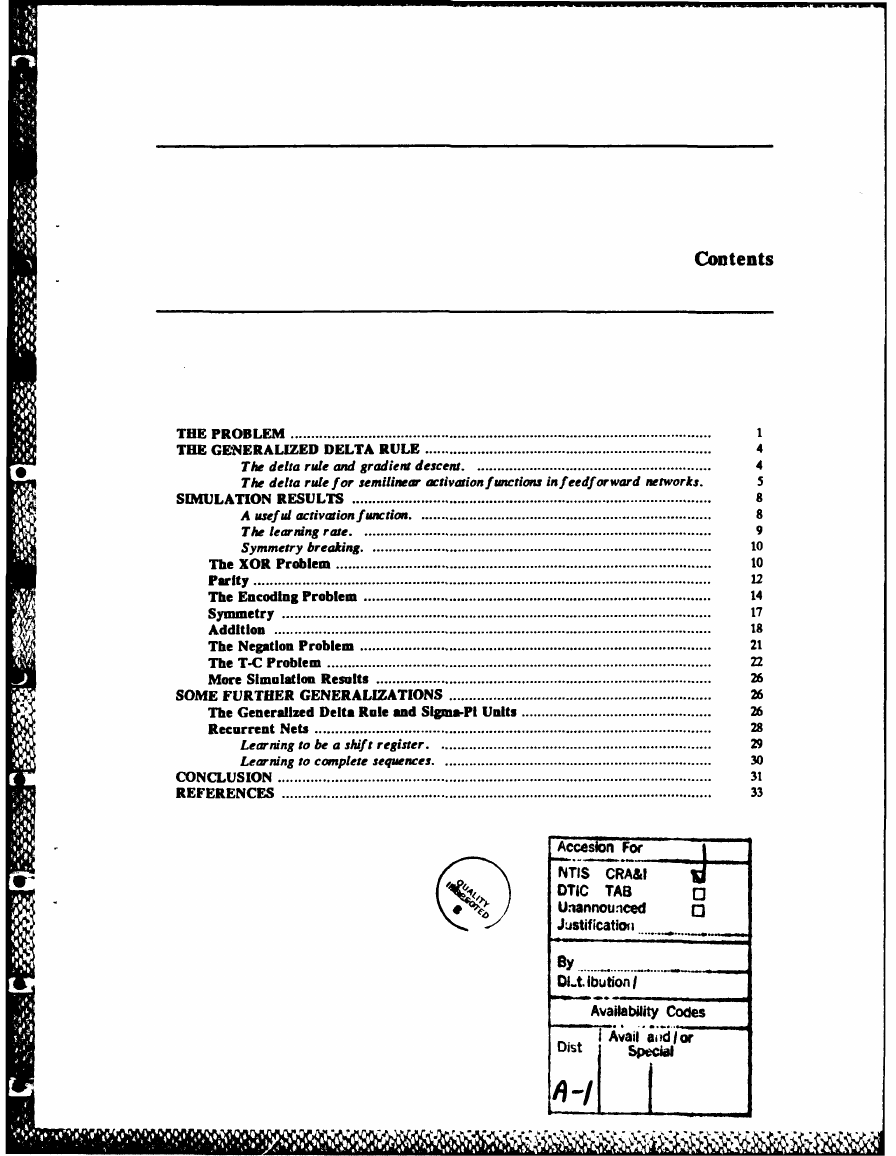
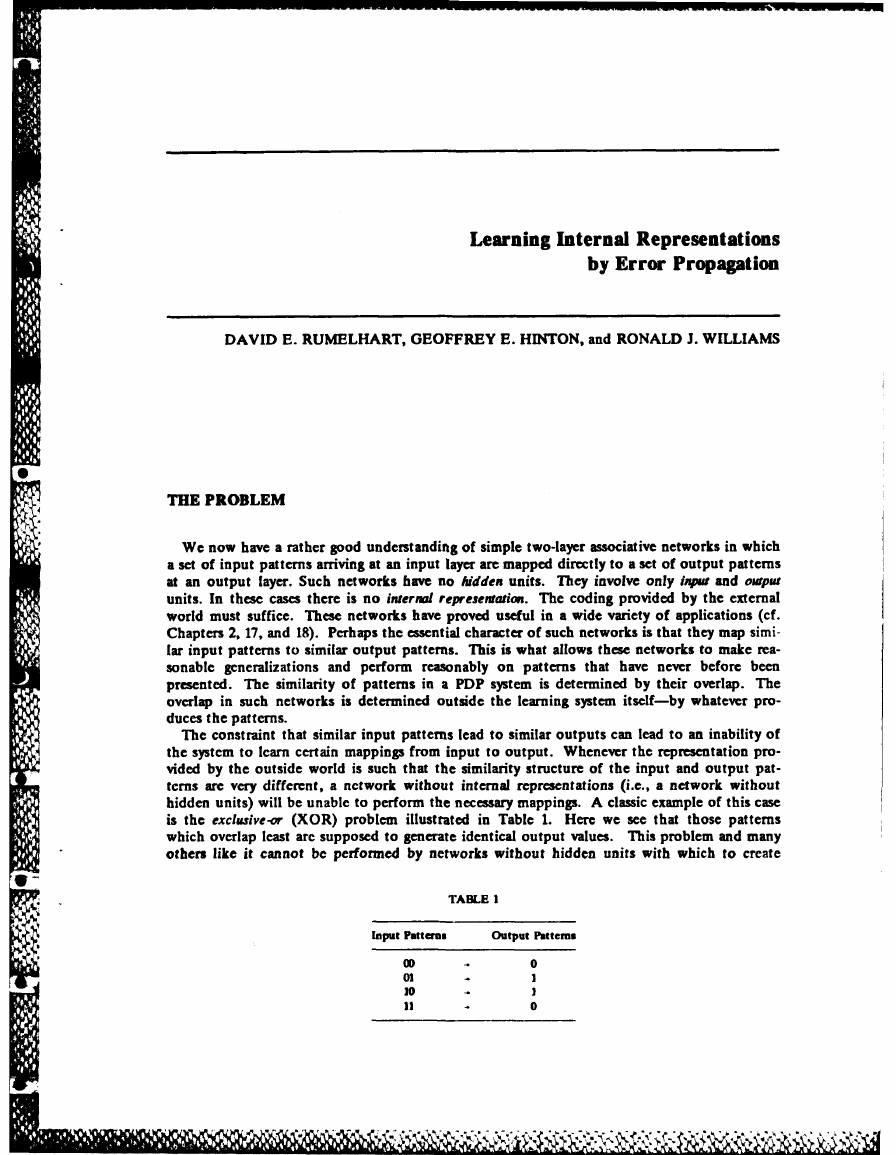
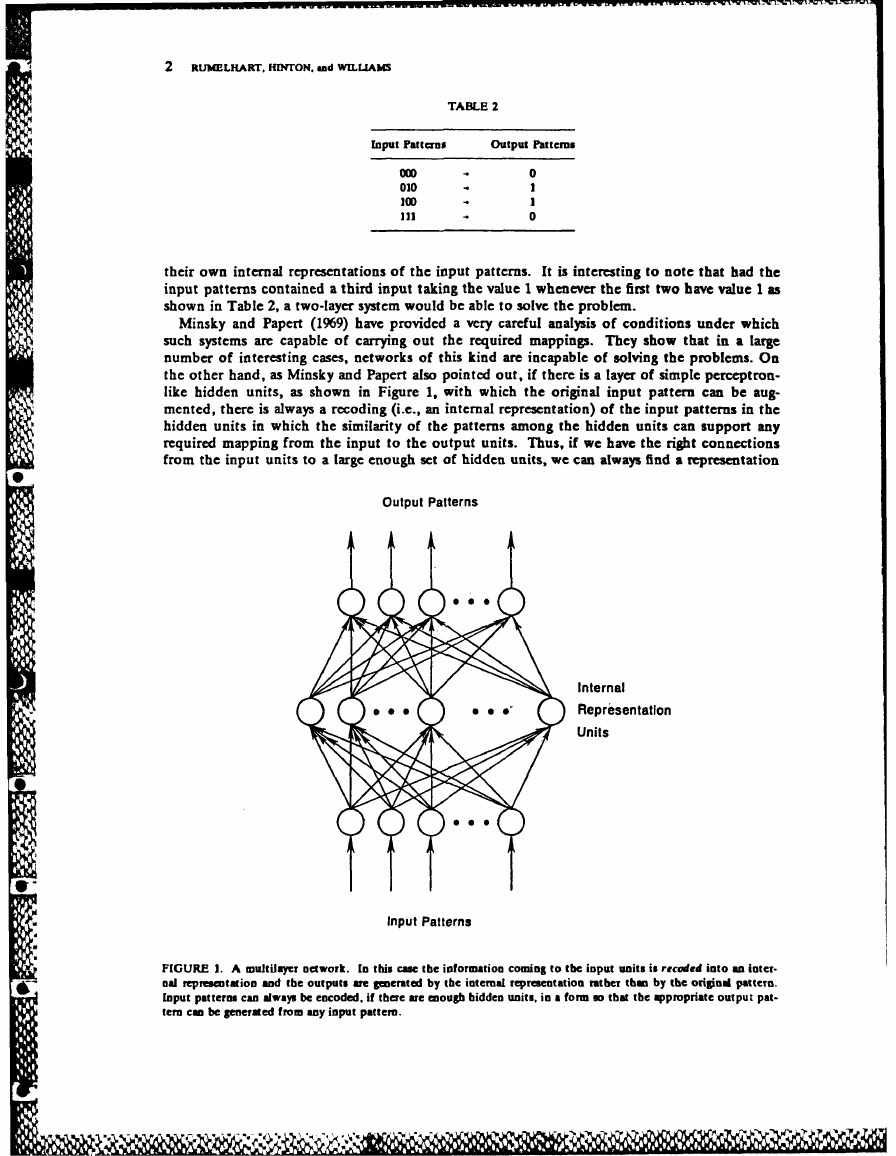
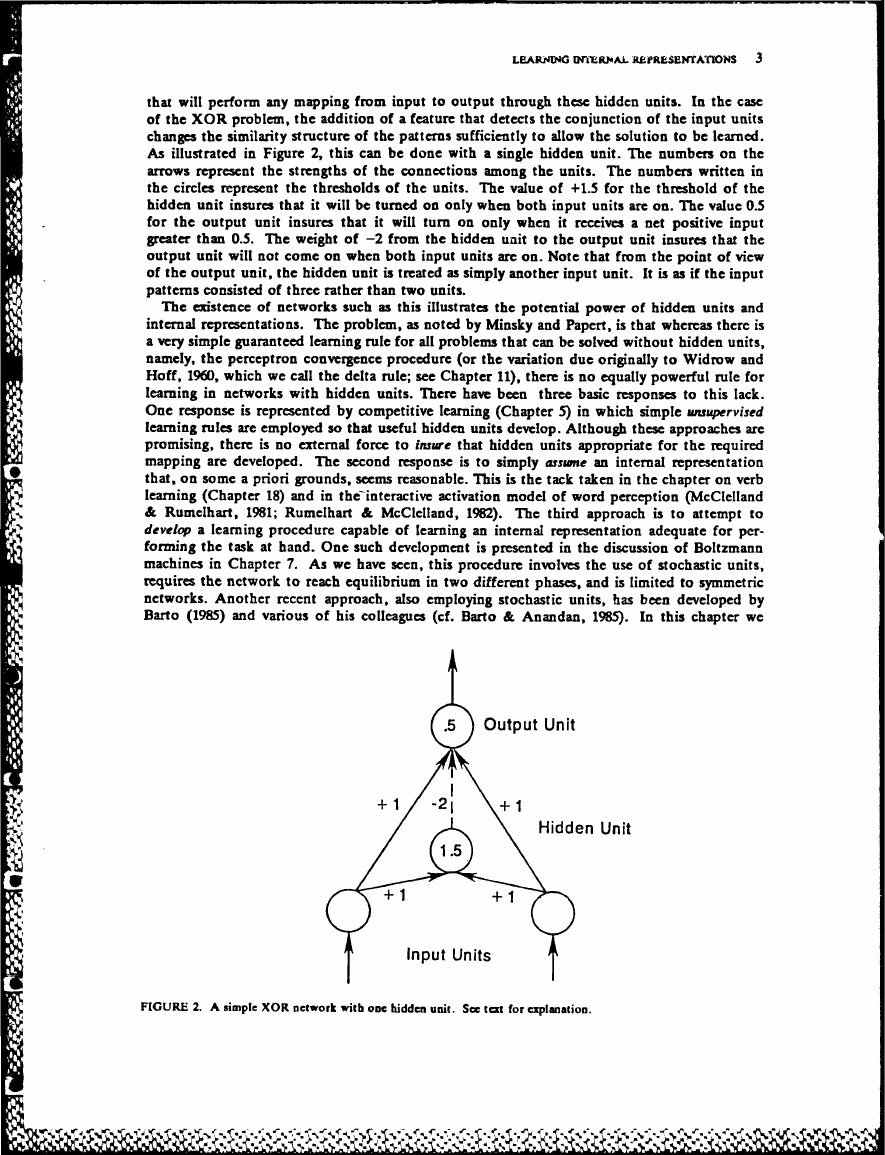








 2023年江西萍乡中考道德与法治真题及答案.doc
2023年江西萍乡中考道德与法治真题及答案.doc 2012年重庆南川中考生物真题及答案.doc
2012年重庆南川中考生物真题及答案.doc 2013年江西师范大学地理学综合及文艺理论基础考研真题.doc
2013年江西师范大学地理学综合及文艺理论基础考研真题.doc 2020年四川甘孜小升初语文真题及答案I卷.doc
2020年四川甘孜小升初语文真题及答案I卷.doc 2020年注册岩土工程师专业基础考试真题及答案.doc
2020年注册岩土工程师专业基础考试真题及答案.doc 2023-2024学年福建省厦门市九年级上学期数学月考试题及答案.doc
2023-2024学年福建省厦门市九年级上学期数学月考试题及答案.doc 2021-2022学年辽宁省沈阳市大东区九年级上学期语文期末试题及答案.doc
2021-2022学年辽宁省沈阳市大东区九年级上学期语文期末试题及答案.doc 2022-2023学年北京东城区初三第一学期物理期末试卷及答案.doc
2022-2023学年北京东城区初三第一学期物理期末试卷及答案.doc 2018上半年江西教师资格初中地理学科知识与教学能力真题及答案.doc
2018上半年江西教师资格初中地理学科知识与教学能力真题及答案.doc 2012年河北国家公务员申论考试真题及答案-省级.doc
2012年河北国家公务员申论考试真题及答案-省级.doc 2020-2021学年江苏省扬州市江都区邵樊片九年级上学期数学第一次质量检测试题及答案.doc
2020-2021学年江苏省扬州市江都区邵樊片九年级上学期数学第一次质量检测试题及答案.doc 2022下半年黑龙江教师资格证中学综合素质真题及答案.doc
2022下半年黑龙江教师资格证中学综合素质真题及答案.doc